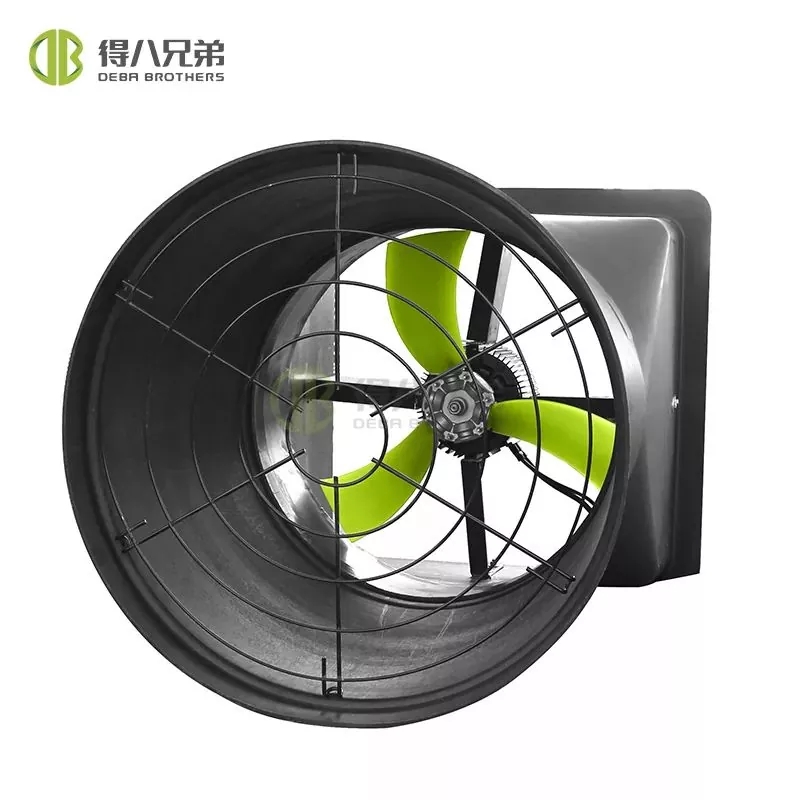Components and concepts of a pig farm ventilation system
2023-10-18
A pig farm ventilation system is a critical component of modern swine farming operations. It is designed to provide a controlled and optimal environment for the health, comfort, and productivity of pigs. Proper ventilation helps to manage temperature, humidity, air quality, and airflow within the pig housing facilities. Here's an overview of the key components and concepts of a pig farm ventilation system:
1. Purpose and Benefits:
Effective ventilation systems offer several benefits to pig farming operations, including:
- Temperature control: Maintaining an optimal temperature range helps prevent heat stress or cold stress in pigs.
- Humidity control: Managing humidity levels reduces the risk of respiratory issues and improves pig comfort.
- Air quality: Removing harmful gases, dust, and odors from the air enhances pig health and productivity.
- Ammonia reduction: Ventilation systems help reduce ammonia levels, which can be harmful to both pigs and workers.
- Disease prevention: Proper ventilation minimizes the risk of airborne disease transmission by improving air circulation and quality.
2. Components of a Ventilation System:
A pig farm ventilation system typically consists of the following components:
- Fans: These provide airflow within the facility, ensuring proper circulation and maintaining consistent conditions.
- Inlets: Air inlets are designed to allow fresh air to enter the building while maintaining control over air distribution.
- Exhaust Fans: These expel stale air, odors, and moisture from the building.
- Cooling and Heating Systems: In some cases, cooling pads, misting systems, or heating systems are integrated to regulate temperature.
- Controllers: Automated systems with sensors monitor and control temperature, humidity, and air quality. They adjust fan speed and inlet openings accordingly.
- Ductwork: Ducts distribute air evenly throughout the facility.
- Air Filters: Filters help remove dust and particulate matter from incoming air, improving air quality.
- Environmental Sensors: These measure parameters such as temperature, humidity, and gas concentrations to provide data for control systems.
3. Ventilation Strategies:
Different ventilation strategies can be employed based on the farm's geographic location, climate, and building design. Common strategies include:
- Natural Ventilation: Utilizes natural wind and thermal gradients to create airflow.
- Mechanical Ventilation: Involves fans and systems to actively control air exchange rates.
- Positive Pressure Ventilation: Uses fans to blow air into the building, maintaining positive pressure to keep out contaminants.
- Negative Pressure Ventilation: Uses exhaust fans to create negative pressure, expelling stale air and contaminants.
4. Importance of Design:
Proper design of the ventilation system is crucial to ensure its effectiveness. Factors to consider include the size and layout of the facility, pig density, building orientation, and prevailing weather conditions. Poorly designed systems can lead to uneven air distribution, drafts, and inefficient operation.
5. Maintenance and Monitoring:
Regular maintenance and monitoring are essential to ensure the ventilation system operates correctly. This includes cleaning fans, filters, and ducts, checking sensors, and verifying that the system is maintaining the desired environmental conditions.
In conclusion, a well-designed and maintained pig farm ventilation system plays a vital role in promoting the health, well-being, and productivity of pigs while creating a safer and more comfortable working environment for farm personnel.



